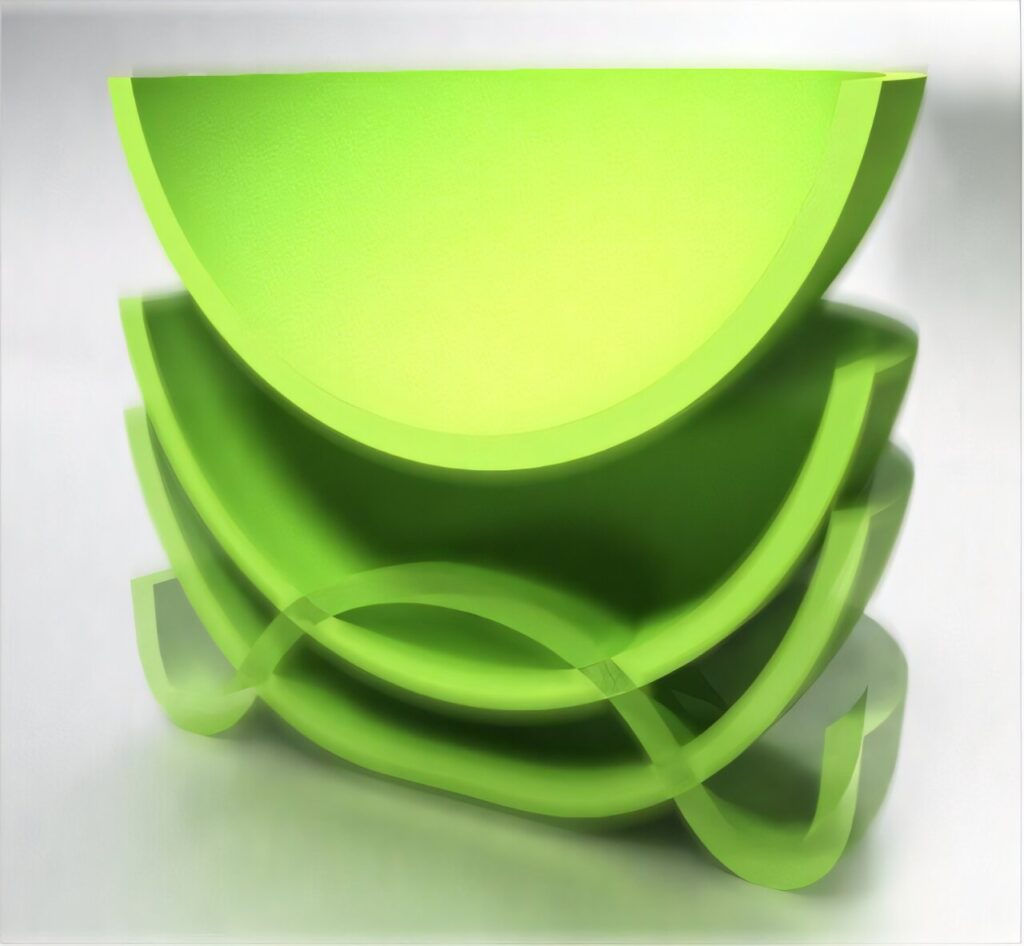
Typical jump behavior of a spherical shell obtained from simulation: jumps from an inverted configuration to its original shape. Credit: Advanced Robotics Research (2025). doi:10.1002/adrr.202500041
Inspired by the simple toy for kids, the Jump Popper toy, researchers have unlocked the key to designing soft robots that are more agile and predictable. Soft robots made of flexible materials hold immense promises for delicate tasks, but their complex movements make them difficult to predict and control dynamic actions, especially jumps.
Currently, teams from Keio University and Osaka University are publishing advanced robotics research studies detailing the physics behind the jumping of thin hemispherical shells, the basic component of jumping soft robots.
The team meticulously analyzed the jump dynamics of these hemispherical shells. A combination of precision experiments, numerical simulations, and theoretical calculations was used to focus on the important role of shell-ground contact. They manufactured a variety of silicone rubber hemispherical shells and controlled their deformation using a desktop-scale experimental setup with pneumatic pressure.
Several sensors captured rapid geometry changes and provided detailed data for analysis. To further investigate this phenomenon, they employed material point method (MPM) to create numerical simulations to accurately replicate complex deformations of the shell during jumps.
An important breakthrough is understanding the changing contact area between the shell and the ground. Once the inverted shell returns to its original shape, the contact area will move from a ring-like shape to a full disk. This seemingly simple transition is important for understanding energy transfer that drives the shell upwards.
By analyzing these contact dynamics, the researchers developed a prediction formula for jump heights and divided it into two important phases: initial lift and final snap. This equation accurately reflects both experimental and simulated results.
The ability to predict jump height is an important advance in soft robotics. This eliminates the need for extensive and time-consuming trial and error testing, allowing researchers to design robots tailored to specific tasks and environments. This is especially important in areas such as exploration, search and rescue, and environmental surveillance, where robots need to navigate complex and unpredictable terrain.
“This study emphasizes the importance of analyzing individual components to understand the overall performance of soft robots,” explains Chief Researcher Tomohiko Sato. “It shows a shift towards the theoretical driven design, allowing us to produce more sophisticated and effective soft machines.”
Co-author Luichi Tarumi, a professor at Osaka University, is expanding his broader influence.
This research not only advances in soft robotics, but also provides valuable insight into the principles of elastic energy and movement, contributing to fields such as biomechanics, materials science, and even aerospace engineering. This represents a huge leap into a robust, predictable, and truly capable software machine.
Details: Takara Abe et al, Snap and Jump: How the elastic shell pops out, Advanced Robotics Research (2025). doi:10.1002/adrr.202500041
Provided by Osaka University
Quote: Pop’s Physics: Building a Better Jump Robot Retrieved June 30, 2025 from https://techxplore.com/news/2025-06-06-physics-robots.html (June 30, 2025)
This document is subject to copyright. Apart from fair transactions for private research or research purposes, there is no part that is reproduced without written permission. Content is provided with information only.

